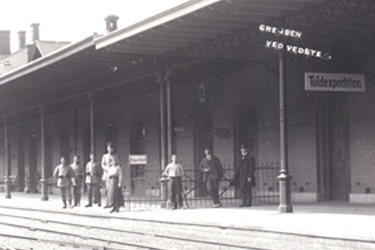The Danish/German Border Station
Following 1864, Egebæk-Hviding was divided in two: Egebæk in Denmark and Hviding in Prussia. The station opened on 15 November 1887, connecting the Bramming-Ribe-railway line with Schleswig-Holstein. Thomas Arboe was the architect, and with its 220 m platform the station became Northern Europe’s longest.

The platform was divided by an iron grille and each country had its own staff to cover all functions. The Customs staff checked for smuggling, which also took place amongst staff members themselves. In 1916, a German porter, Peter Olsen, was caught smuggling a piglet to Germany under the pretence that it was a rabbit.
